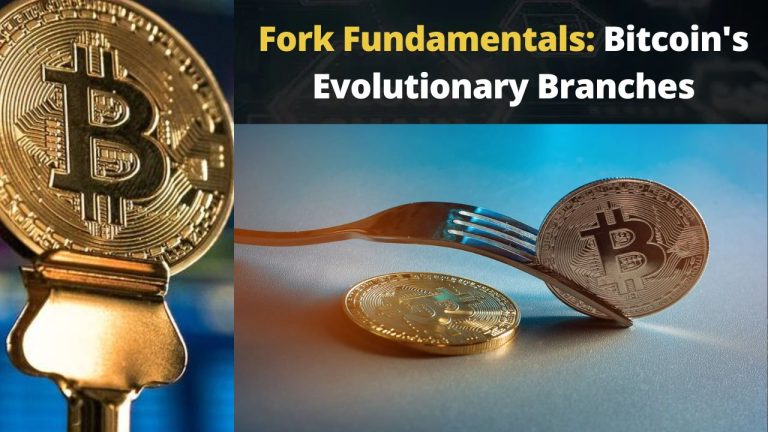"Advertisement"
Fork Fundamentals: Bitcoin’s Evolutionary Branches
Since its groundbreaking debut in 2009, Bitcoin has been at the forefront of the decentralized cryptocurrency movement, experiencing a multitude of transformations along the way.
With platforms, the significance of Bitcoin’s growth becomes even more evident. Central to its evolutionary trajectory are the phenomena known as “forks.”
These forks, often surrounded by intense discussions and deliberations in the crypto sphere, play a pivotal role in shaping Bitcoin’s journey.
This piece aims to provide a clear and comprehensive insight into the world of Bitcoin forks, delving into their importance, their historical context, and potential future ramifications.
For a trading experience that sets you apart, make your way to bitcoin 360 ai and embrace the best trading platform.
Understanding the Basics: What is a Fork?
At its core, a fork represents a divergence in the blockchain. It’s akin to taking an existing software program’s code and altering it to create a new version, resulting in two distinct paths.
- Hard Fork: Creates a permanent split in the blockchain. Both the old and new chains exist separately, and transactions on one chain aren’t recognized on the other. A new token is typically introduced.
- Soft Fork: A temporary divergence in the blockchain. Over time, the chains reconverge, typically when enough participants upgrade to the newer version.
While both types involve changes to the underlying code, a soft fork is backward-compatible, while a hard fork is not.
Reasons Behind Bitcoin Forks
Bitcoin forks have emerged due to a variety of reasons:
- Scalability Issues: The infamous block size debate is a prime example. As transaction volumes on the Bitcoin network increased, debates arose over increasing the block size to accommodate more transactions.
- New Features: Some forks introduce enhancements or new functionalities to the protocol.
- Security Concerns: Vulnerabilities, once discovered, may necessitate a fork to patch them.
- Ideological Differences: Sometimes, the community is divided over the direction Bitcoin should take, leading to forks that represent different visions.
Notable Bitcoin Forks: A Historical Journey
- Bitcoin Cash (BCH): Born in August 2017 due to disagreements over scalability solutions. BCH increased the block size from 1MB to 8MB, aiming to process more transactions per block.
- Bitcoin SV (BSV): A fork of BCH in November 2018. Advocates, led by Craig Wright, wanted to restore “Satoshi’s original vision” and further increase the block size.
- Bitcoin Gold (BTG): Created in October 2017 to counter the centralization of mining. BTG replaces Bitcoin’s SHA-256 mining algorithm with Equihash, making it feasible for GPUs to mine again.
There have been several other forks, but these three capture the essence of ideological and technical splits in the community.
The Technical Process: How Forks Happen
A fork is initiated when there’s a change in the consensus rules of the cryptocurrency. Here’s a simplified process:
- Proposal: A change is proposed, typically by developers or influential community members.
- Discussion & Review: The proposal undergoes rigorous scrutiny. Feedback is collected.
- Implementation: If accepted, the change is coded into the software.
- Adoption: Miners and nodes adopt the updated software. This is crucial for the success of the fork.
- Activation: At a predetermined block height, the fork activates, leading to a split if it’s a hard fork.
Implications of Forks for Bitcoin Holders
For those holding Bitcoin during a hard fork, there’s often a bonus: they receive an equivalent amount of the new coin. For instance, if you had 2 BTC during the BCH fork, you’d also receive 2 BCH.
However, this comes with challenges:
- Volatility: Forks can introduce price instability as the market reacts to the new coin.
- Access: Ensuring you can safely access the new coins requires caution. Not all wallets or exchanges support every fork immediately.
Forks and the Broader Cryptocurrency Ecosystem
Bitcoin’s forks have set precedents for other cryptocurrency projects. They highlight the importance of community consensus and the challenges of scalability and security.
Exchanges play a pivotal role; their support (or lack thereof) can influence a fork’s success.
Controversies and Challenges
- Centralization Concerns: Forks can unintentionally lead to centralization, especially if a majority of miners or nodes support a particular fork.
- Chain Hijacking: Accusations often arise about attempts to undermine the original chain post-fork.
- Security: Post-fork, if many miners shift to the new chain, the original one might be left vulnerable to attacks.
The Future: Anticipating Upcoming Forks and Innovations
Predicting specific forks is challenging, but it’s certain that as long as there are disagreements and evolving needs, forks will continue.
The key lies in community engagement and understanding the implications of each fork.
Conclusion
Forks, in many ways, represent the decentralized ethos of Bitcoin. They showcase the adaptability of the protocol and the community’s commitment to innovation and security.
As we journey ahead, forks will remain a testament to Bitcoin’s evolutionary spirit.
